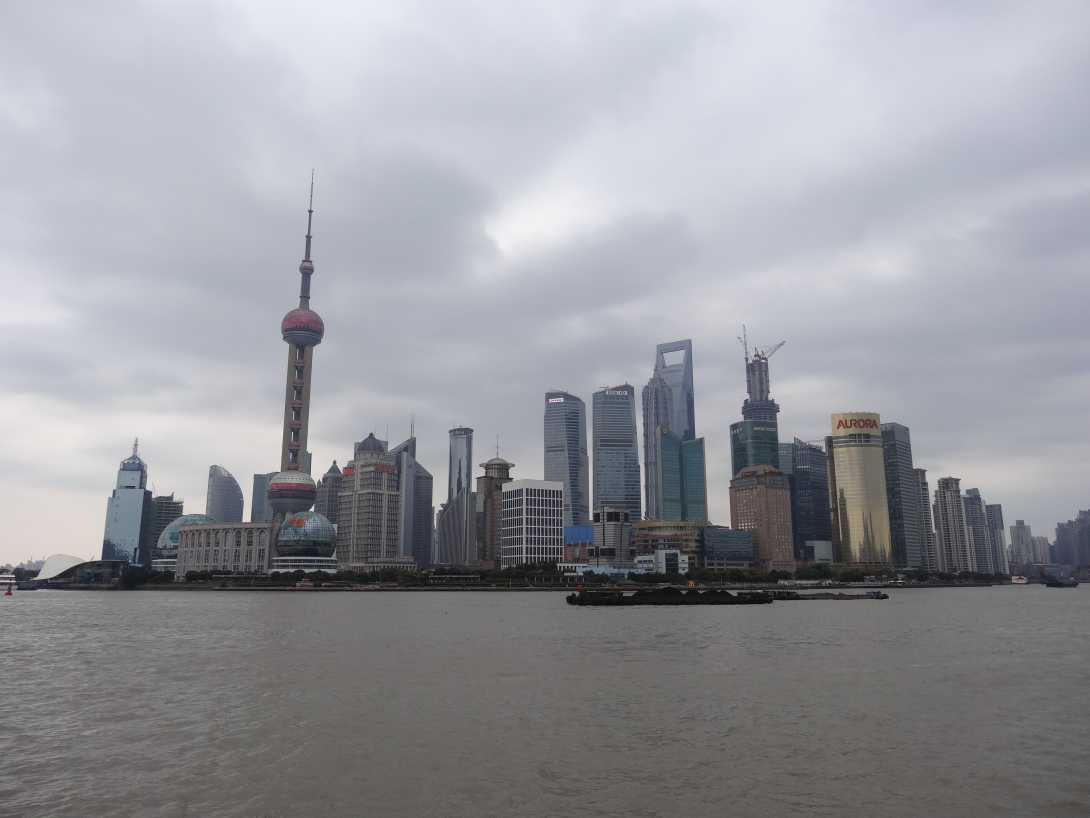
Greater cooperation through carbon trading could reduce the cost of climate change mitigation by 32 percent by 2030, according to a new World Bank report released today at an international carbon event in Vietnam.
New modelling analysis undertaken for the State and Trends of Carbon Pricing 2016 report shows that increased international carbon trading could enable large-scale emissions reductions at much lower cost than at present, based on the carbon mitigation goals spelled out in countries’ national climate plans under the Paris Agreement -- the Nationally Determined Contributions, or NDCs. By the middle of the century, an international market has the potential to reduce global mitigation costs by more than 50 percent.
The goal of limiting emission reductions to meet a 2°C or lower target will be difficult to achieve cost-efficiently without more carbon trading, according to the report, prepared by the World Bank and launched at the 15th Assembly of the Partnership for Market Readiness.
“The more we cooperate through carbon trading, the larger the savings and the greater the potential to increase ambition by countries in the short term,” said John Roome, Senior Director for Climate Change at the World Bank. “To be effective, carbon pricing policies must be coordinated with other energy and environmental policies –this will require collaboration within and between countries.”
The Paris Agreement, reached at COP21 in late 2015, sets up a framework for global cooperation through carbon markets. Over 100 countries consider carbon pricing initiatives as part of their NDCs, through emissions trading within or across borders, international crediting, carbon taxation and other measures.
Under this new cooperative framework, one country can benefit from mitigation activities resulting in emission reductions in another country to fulfill its NDC. The report indicates that financial flows of 2–5 percent of gross domestic product in countries with lower-cost mitigation activities could be realized for investments that will reduce emissions by 2050.
The report also shows that momentum on carbon pricing has continued to grow. In 2016, 40 national jurisdictions and over 20 cities, states, and regions are putting a price on carbon, including seven out of 10 of the world’s largest economies. The coverage of carbon pricing initiatives on global emissions has increased threefold over the past decade, translating to the equivalent of around 7 gigatons of carbon dioxide (GtCO2e), or about 13 percent of global GHG emissions. In addition, governments raised about US$26 billion in revenues from carbon pricing initiatives in 2015. This represents a 60 percent increase compared to the revenues raised in 2014.
This year saw the launch of two new carbon pricing initiatives: British Columbia put a price on emissions from liquefied natural gas plants alongside its carbon tax, and Australia implemented a safeguard mechanism to the Emissions Reduction Fund, requiring large emitters that exceed their set limit to offset excess emissions.
Looking ahead, next year could see the largest ever increase in the share of global emissions covered by carbon pricing initiatives in a single year. If the Chinese national Emissions Trading System (ETS) is implemented in 2017 as planned, it would become the largest carbon pricing initiative in the world, surpassing the EU ETS. Initial estimates show that emissions covered by carbon pricing initiatives could increase from 13 percent to between 20 and 25 percent of global GHG emissions.
In April, the High Level Panel on Carbon Pricing called upon the international community to double the percentage of global emissions covered by explicit carbon prices to 25% by 2020 and to double it again to 50% within a decade. Heads of State from Canada, Chile, Ethiopia, France, Germany and Mexico are among the leaders calling for this increased commitment.
The report was prepared with the technical support of Ecofys and Vivid Economics.
To download the full report, visit https://openknowledge.worldbank.org/handle/10986/25160
This post was originally posted here.
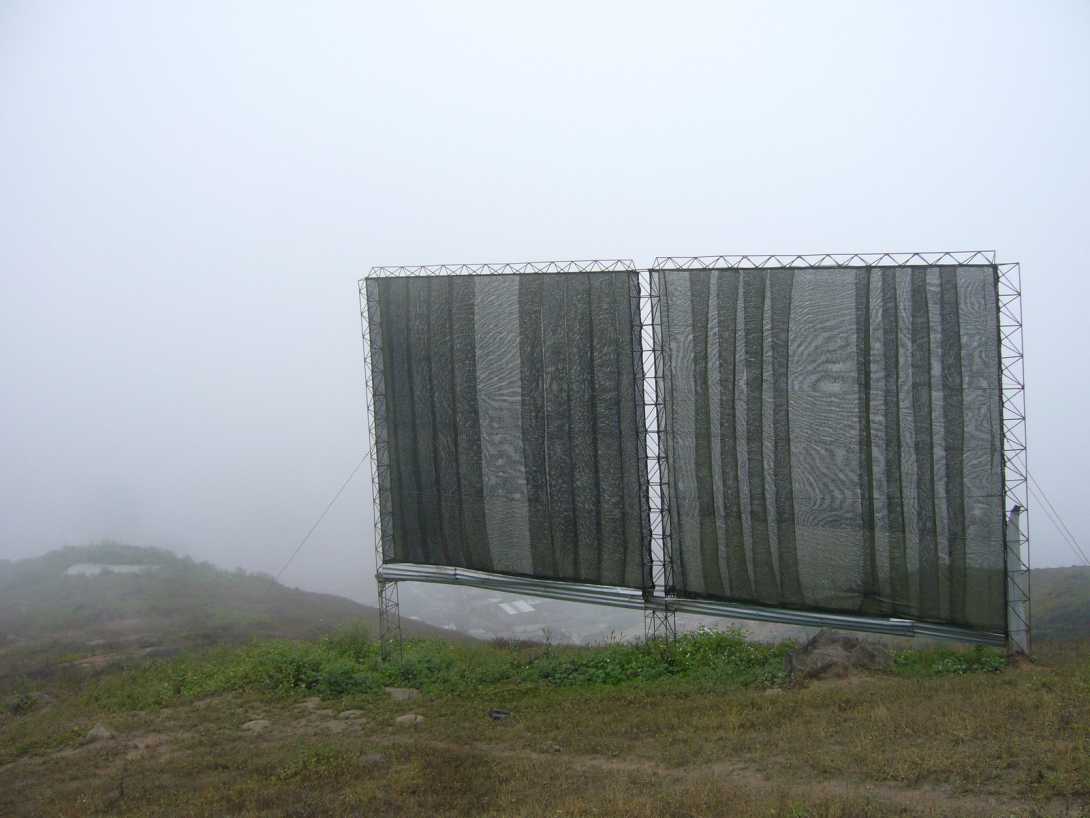
A Moroccan fog-harvesting project was awarded a UN Climate Change prize in Bonn, Germany.
The system, developed and installed by Morocco based NGO Dar Si Hmad, is said to be the largest fog-water harvesting system in the world.
Thanks to the project, more than 400 people from isolated villages on the edge of the Sahara Desert in Morocco have access to running water.
This has been of enormous value to the village women who used to spend more than three hours a day walking to fetch water from far-away wells.
Dr. Jamila Bargach, Executive Director of Dar Si Hamd, said: “Berber women bore the laborious task of carrying water from distant wells – a burden that greatly limited opportunities for young women.”
Fog harvesting utilises a specialised mesh that traps water droplets from the fog.
The condensed trapped droplets then fall into a container, which slowly fills up to form a significant reserve of water.
Dar Si Hmad’s project involves 600 square meters of mesh netting, seven storage reservoirs, six solar panels and more than 10,000 meters of piping.
Bargach said: “The fog project should not simply be reduced to the story of technical and success: there are more complex and intertwined stories to tell... One narrative is that of curiosity and aspiration; one of motivation and quest for dignity; and one of rigour and determination.”
The system has received the prize under the Momentum for Change Women for Results focus area for providing a sustainable water source to combat the effects of desertification.
UNFCCC Spokesman Nick Nuttal said: “It is impressive to see so many original and creative ways to tackle climate change... It’s also great to see a winner from Morocco, this year’s host of the United Nations Climate Change Conference.”
This article was originally posted here.

The developing world and emerging markets are among the most exciting places for climate policy and innovation, according to a former White House official who advised the Obama administration in the run-up to the COP20 summit in Lima, Peru.
Some developing nations are already looking at climate technologies as a major economic opportunity, said Kelly Sims Gallagher, now a professor and director of the Centre for International Environment and Resource Policy at Tufts University in the United States.
She made the remarks on the opening day of Science Policy Research Unit’s (SPRU) 50th anniversary conference at Sussex University in Brighton, UK.
Developing countries have several advantages that put them in a good position to innovate, Gallagher told SciDev.Net.
There is less existing built infrastructure, which tends to create a lock-in effect, making it difficult to adopt cleaner and more efficient technologies.
And the cost of renewables and other energy efficiency technologies is now low enough to make investing in them a sensible economic decision, she said.
Very few governments have rushed to get domestic policies in place after Paris [the 2015 climate treaty], she noted, adding that it is a big agenda, and poorer countries may have a competitive edge.
Gallagher acted as an adviser to Obama on the US-China deal that was widely seen as a tipping point for climate policy success during COP21 in Paris.
"The cost of renewables and other energy efficiency technologies is now low enough to make investing in them a sensible economic decision."
Discussions on innovation generally overlook the developing world but China’s investment in industries of the future has created healthy competition, according to Gallagher, and “a lot of other developing countries are starting to experiment in the same way.”
India-based wind energy company Suzlon, which operates in 19 countries, is one example, Gallagher told SciDev.Net. “Ethiopia has written an innovation strategy that very explicitly includes a focus on adaptation and resilience of technologies,” she said.
Bangladesh is another example of a country looking at this policy area strategically, “not only as a matter of survival but also as an economic opportunity,” Gallagher explained.
“I actually think the least developed countries could be the pioneers in those technologies,” she said, and then sell them to industrialised countries.
The scale of the climate change challenge needs deep structural and systemic change, said Lord Nicholas Stern, professor at the London School of Economics in the UK. “Over the next 15-20 years we need an investment of $90 trillion for (green) infrastructure.”
Commenting on governments’ policy moves after the Paris accord, Gallagher said she was disappointed by the slow pace so far. “Very few countries, or negotiators, or government leaders, or even NGOs for that matter looked past Paris,” she told SciDev.Net.
“There was such an overriding focus on whether or not [an agreement] was even possible, that nobody had started thinking about the aftermath and the post-Paris agenda, which is clearly national and sub-national policy-making.”
This blog post was originally posted here.
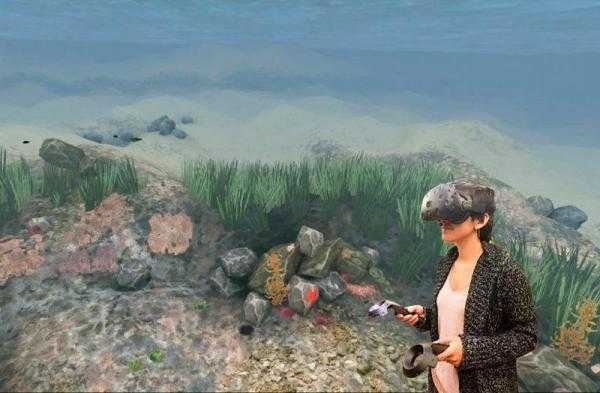
It's hard to comprehend the concept of oceans getting more acidic. Unless you become the coral.
It’s not easy to get people exercised about ocean acidification. Yes, it’s a nasty consequence of climate change, a potential death sentence for oysters, clams, sea urchins and, most of all, coral. But it’s slow-motion extermination, out of sight of most humans, and that makes it difficult for us to feel much of a connection—let alone any responsibility—for the calamitous process.
Researchers at Stanford, however, believe a good way to help people become more aware of their impact on nature may lie in a particularly unnatural experience—virtual reality (VR) immersion.
“Some experiences may not be well-suited for VR,” says Jeremy Bailenson, professor of communications at Stanford and director of its Virtual Human Interaction Lab (VHIL). “But if we leverage what is special about the medium—the fact that you can move your body and interact with a scene—then we can create intense experiences that actually change you.”
Bailenson has been researching the value of VR as a teaching tool since the late 1990s, and he’s found that it can have considerably more impact than simply knowing that damage is being done to the natural world. Once someone can see, hear and even feel what’s happening from the perspective of plants and animals, he or she tends to understand their fate in a more visceral way and is more motivated to take action, he says.
That notion was borne out in a recent study by Bailenson and a team of scientists from Stanford, the University of Georgia and the University of Connecticut. They determined that immersing people in a VR experience was clearly more effective in getting through to them than simply showing them a video on the same subject.
The key was to have people become the coral.
In two worlds
The Stanford team worked with marine biologists to build a virtual replica of a reef around the Italian island of Ischia. Underground volcanic vents there have been spewing carbon dioxide, and that has given researchers the opportunity to closely analyze the effect on marine life—specifically how, as ocean water absorbs more carbon dioxide and becomes more acidic, it corrodes coral and the shells of crustaceans.
From that model, the researchers programmed a VR experience that speeds up the destructive process, allowing a person to first interact with a reef full of life, and then be an up-close-witness to decay as species disappear. Ultimately, the person takes on the perspective of a coral, one whose branches break off with an audible crack.
At its best, virtual reality, says Bailenson, enables you to have a “dual presence,” where you know you’re still in a room wearing a headset, but also actually can feel that you’re at the bottom of the sea. It’s important, he says, for the VR environment to respond your body’s movements.
It also should to be an experience that stimulates multiple senses, including touch when possible. The coral reef VR, for instance, creates the sensation of a fishing net brushing against you. If it feels natural, notes Bailenson, the brain is able to treat the experience as authentic.
That said, Bailenson concedes it’s still difficult to measure the long-term impact of VR immersion. In other words, can it actually spur people to change their behavior for an extended period of time? In a previous study, Bailenson found that people who chopped down virtual trees, using a joystick that vibrated like a chainsaw, used 20 percent less paper afterwards than others who read about cutting down trees or watched a video about the process.
But that study and most of the other research to date has relied on follow-up questionnaires a week or two later. So, researchers haven’t really been able to determine how long VR-induced empathy endures. Bailenson thinks that is about to change.
“With the advent of mobile equipment, we are planning to run longitudinal studies, which means collecting data from very large, demographically diverse data sets,” he says. “This will be very important in discovering the impact of VR on the general public—from children to the elderly, and those from all socio-economic statuses and backgrounds.”
Teachable moments
Bailenson and the Stanford team have already begun taking steps to move virtual reality teaching beyond the research lab. Earlier this year, the Stanford Ocean Acidification Experience and a related VR documentary were featured in an arcade at the Trebeca Film Festival. “For a week, we had a constant line of people,” says Bailenson. “They were waiting in line to learn about marine science.”
And last week, the VR experience was made available to the public as a science education tool. It can now be downloaded for free and experienced on HTC Vive, a high-end virtual reality system that sells for about $800. While the consumer market for VR systems is still relatively small, the consensus is that sales will start to take off in the coming holiday season now that prices have begun dropping and headsets are no longer so unwieldy. Next year, according to the VR industry consulting firm KZero, more than 170 million units could be sold.
Bailenson hopes Stanford’s software will become a model for virtual reality “field trips” that will allow students to have experiences that can teach them about nature in a uniquely personal way.
To that end, he says museums have begun investing in VR systems to provide that opportunity.
“You’re not watching something, you’re doing it,” he says. “You learn by doing. These are magic, teachable moments.”
This blog post was originally posted here.

Concepter Inc. is a newly established company with a 3-years old story contributing to a better nightshot amateur activities. The company made a first step forward in 2013, launching an unforgettably successful campaign on Kickstarter. Till then, Concepter has widened its product line and built a stable community of fans, supporters, professionals and backers. The energy and pace our company has given to devices like iblazr 1 and iblazr 2 is driven by a personal touch to achieve user’s satisfaction.
The iblazr family represents LED flash for smartphones, tablets and DSLR cameras. The gadget goes well beyond simply lighting up its subjects. With an App and special accessories it offers user-controlled photo quality regulation for an amateur “smartphonographer.”
With our iblazer lights we encourage people to tell their climate stories, to document nature as it is affected by climate change and to film and photograph the all important climate solutions we see enacted every day. Our gadgets are not only for photo-travelers and photography fans, but for every ordinary citizen of the Earth, who is affected by climate change and wants to build a resilient low-carbon future.
At Concepter Inc. we have chosen the least harmful technology for mass production to protect the atmosphere and environment. We aim to work only with ecologically safe and effluent-free materials.
We are exited to join the global partnership program Connect4Climate as they support young filmmakers around the world highlighting the critical stories on climate change.

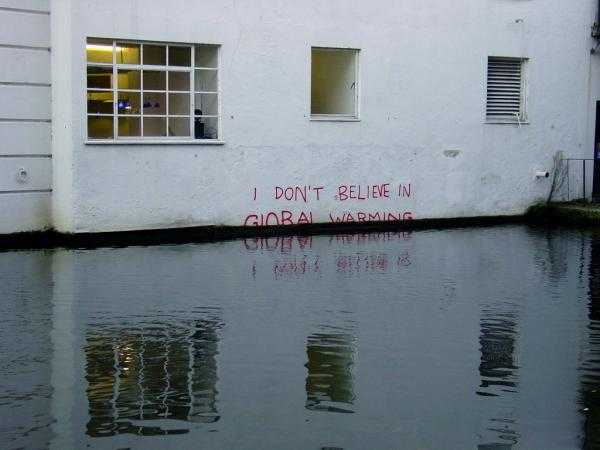
Communicating about a phenomenon like climate change, which by nature is complex, in plain language is a process fraught with several challenges.
The most important aspects of climate change issues, ideas, and policy measures are lost in the rumpus created by the confusion resulting from the lack of proper understanding of what climate change is really about.
While the basics of climate change is well known, that the world is warming due to increased levels of greenhouse gases emitted by humans, the real phenomenon is often reduced to an abstract theory. The evidence clearly points to a warming world, with record temperatures recorded every year, and still some argue that Earth is cooling. Some even argue that global warming is a scam, though overwhelmingly the Scientific community has shown that climate change due to a warming world is a reality. The difference in opinion is so much that there is very little room for rational argument.
The opinion on climate change is divided not because of the unavailability of proper information, but mostly because of the way the available information is falsely analyzed and mis-presented to the public. Communication with the vast majority of people who range from being dismissive to indifferent or undecided about an issue like climate change sure isn’t a cakewalk.
Creating an efficient communication strategy that brings about real change in people’s perception requires understanding the target audience’s psychology.

Photo credits: Feel green. Think green, Kristina Bychkova, Carpi, IT , Voices4Climate competition
While evidence-based science is something climate change specialists are comfortable with, common people are far removed from the harsh realities of climate change and the scientific data and concepts surrounding climate change. Also, since essays, research findings, and scientific data can be full of jargon, simplifying such information and presenting it in a well-articulated manner can be the first step towards getting and retaining the audience’s attention.
To overcome challenges and effectively communicate the causes and effects of climate change to a widespread audience, it is necessary to:
-
Craft messages that offer immediate benefits. Since climate change is not something that would top everyone’s priority list, it is important to create and deliver messages that would make them want to give a serious thought to climate change implications.
Instead of saying: Weatherization is essential to battle the consequences of climate change.
It’s better to say: Give your family a better and safer environment by protecting your home and taking action against climate change.
-
Let go of jargon. The language used for the purpose of communicating climate change is full of jargon, which at times can be intimidating. To make sure that more people pay attention to the issues at hand and understand the proper context of communication, it is imperative to simplify the language.
Instead of saying: Research bears testimony to the fact that the recent climate change is anthropogenic.
It’s better to say: Research supports the fact that the recent climate change has been brought about by human activity.
People should be made aware of the availability of jargon busters and acronym finders.
-
Tell a story. The focus should be on the audience rather than the argument. Putting out numbers, graphs, percentages, and other statistical information will not help drive the point home. It’s important to use a narrative that appeals to the emotions of people. To bring about a behavioral change, it’s important to understand what really appeals to the people. Using an emotional appeal which is also logically sound can help make the language more persuasive.
-
Make the messages relatable and credible. People respond better to someone they can relate to. People tend to react with skepticism towards things they can’t completely grasp. Therefore, it’s important to deliver messages that people can relate to, which in turn can have a lasting impact, when compared to climate change messages put out by Government and other institutions of authority.
-
Harness the power of social and visual media. Social media has tremendous reach and can be utilized to deliver messages to the masses. From graphs to charts to infographics, one can use different types of visual messages that summarize the cause and consequences of and solutions to climate change. Creating other impactful visual media such as videos and images can help garner much attention since they elevate the experience of the viewers.
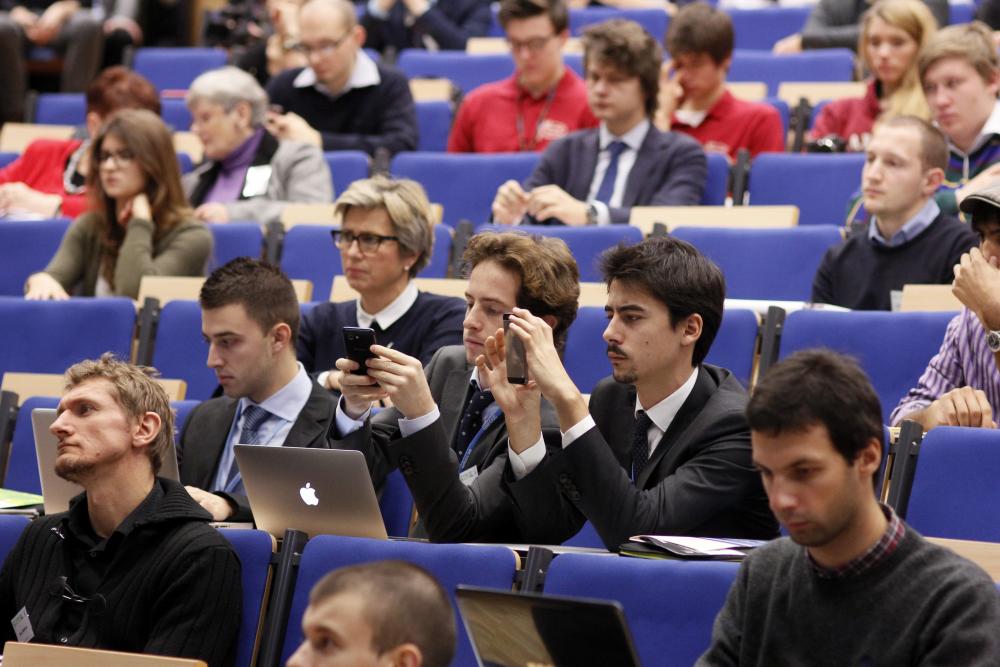
Photo credits: Tomasz Wawer
Although the basic idea of communication is to help people know about something, it’s also important to focus on what they would do with the information they’ve access to. A message without any call to action hardly brings about any change. A change in behavior can be brought about by changing people’s mindset, which is why it’s important to deliver messages that can strike a chord with people and influence long term behavior.
It’s crucial to implement effective communication strategy sooner than later because we are at a juncture where creating awareness is more necessary than ever before.
Banner photo credits: Stefano Cefalo Geronimo, UK, Voices4Climate competition
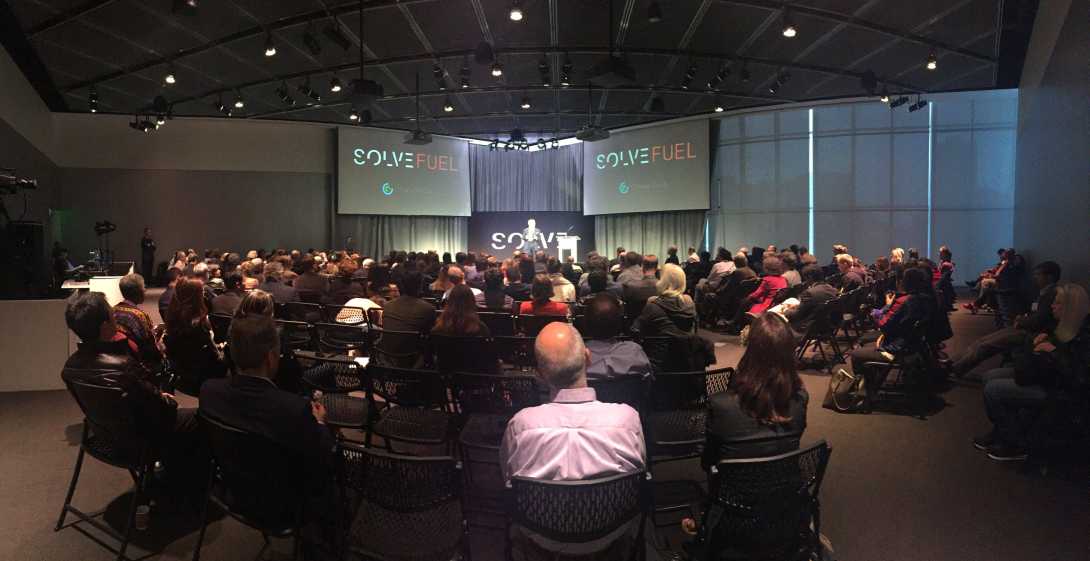
Connect4Climate was excited to join our partner Massachusetts Institute of Technology (MIT) Climate CoLab’s Crowds & Climate conference on September 28th.
Climate CoLab, a project of the MIT Center for Collective Intelligence, is an online community of over 75,000 people who collaborate and compete through a series of interrelated contests focused on different aspects of the climate change problem. At this year’s Crowds & Climate conference, 27 climate change projects were recognized including the grand prize winner, the Vancouver, BC company Climate Smart for its Business Energy and Emissions Profile (BEEP) Dashboard - a carbon mapping tool that connects cities and businesses working to cut carbon emissions.
Lucia Grenna, Program Manager of Connect4Climate, served as a judge of the Shifting Behavior Session. The winners included DearTomorrow, ENGAJAMUNDO, and ClimateX and presented at the “Inspiring the Public: Climate Education & Collaboration” breakout session of the conference. Each project showcased interesting ways to engage and empower people’s voices and to educate about climate change. DearTomorrow invites parents and grandparents to submit letter, photo, and video messages, while ENGAJAMUNDO raises youth voice as an important driving force of the climate action in more than 20 states of Brazil. ClimateX develops a platform where MIT Alumni and broader audience can learn climate-related science, technology and policy.
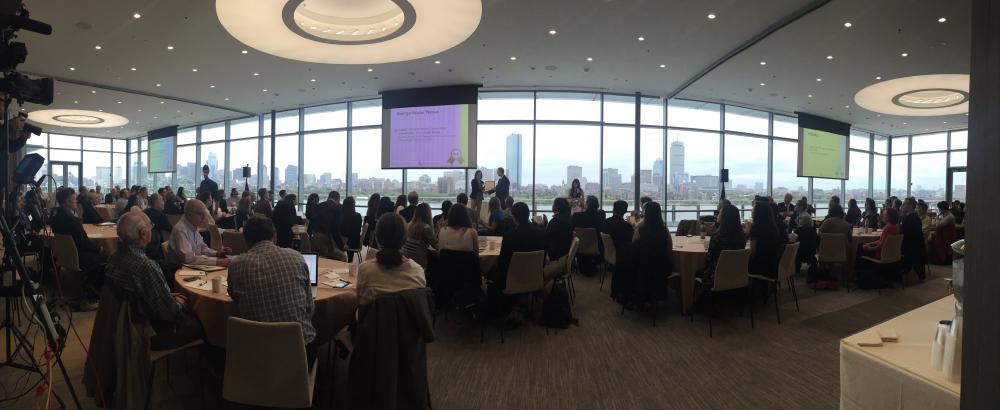
The room where the Massachusetts Institute of Technology (MIT) Climate CoLab’s Crowds & Climate conference took place. Photo credits: YeJin Kim
Other topics such as transportation transformation, urban designs, social enterprises in developing countries, sustainable and efficient supply chain, and carbon price were presented in a series of focused breakout sessions, demonstrating how we can use our global collective intelligence to tackle this important global issue.
The day ended with the keynote speaker Janos Pasztor, Senior Advisor to the United Nations Secretary-General on Climate Change and Senior Fellow at the Carnegie Council for Ethics in International Affairs. Pasztor emphasized that the Paris Agreement was significantly important not only because it concluded with an agreement of 175 Parties and built a long-term vision, but also because of the active participation and presence of non-state actors such as civil society organization, youth groups, private sector to support the negotiation and demonstrate what they have been doing and what they will do in the future. He also shared a #Youth4Climate message with us.
[video:https://vimeo.com/185661285]
Connect4Climate was very inspired to see the stimulating and innovative climate proposals, and we look forward to hearing more ground-breaking ideas for its new contest, Anticipating Climate Hazards: How can vulnerable communities best prepare for climate-related hazards, and what new tools can be used to incentivize early action?
In collaboration with the UN Secretary-General’s Climate Resilience Initiative A2R — Anticipate, Absorb, Reshape, this contest invites solutions on how the world should prepare and respond to climate extremes and climate hazards. A2R is a global, multi-stakeholder initiative, launched in November 2015 to accelerate action on the ground to enhance climate resilience for the most vulnerable countries and people by 2020. Proposals are due February 10, 2017.

Every year, thousands of campaigners, businessmen, diplomats and everything inbetween descend upon New York City for Climate Week. In recent years, the week has carried particular significance as it coincided with United Nations General Assembly meetings where climate change was a top agenda item. This year, while the UN focused heavily on a number of other issues including the global migration crisis, the discussions of Climate Week focused on a wide range of issues that lie under the vast climate umbrella.
Shifting investments away from fossil fuels and towards the renewables was one topic. Figuring out the best ways to deploy solar power to the developing world as soon as possible was brought up in other venues. Making sure countries hold true to their commitments of Paris was the focus of many events, while working with Wall Street to figure out how to get fossil fuel companies to disclose their carbon risks was another common topic of the many discussions taking place in New York City during the third week of September. Of course, the topics were all connected by climate change, but there was another connection running through all these event: storytelling.
Everyone has a story to tell when it comes to climate change, and getting those stories out to the masses is clearly a priority for those calling for climate action. There’s a real story for everyone: from the investors on Wall Street to the families putting solar panels on rooftops near Main Street.
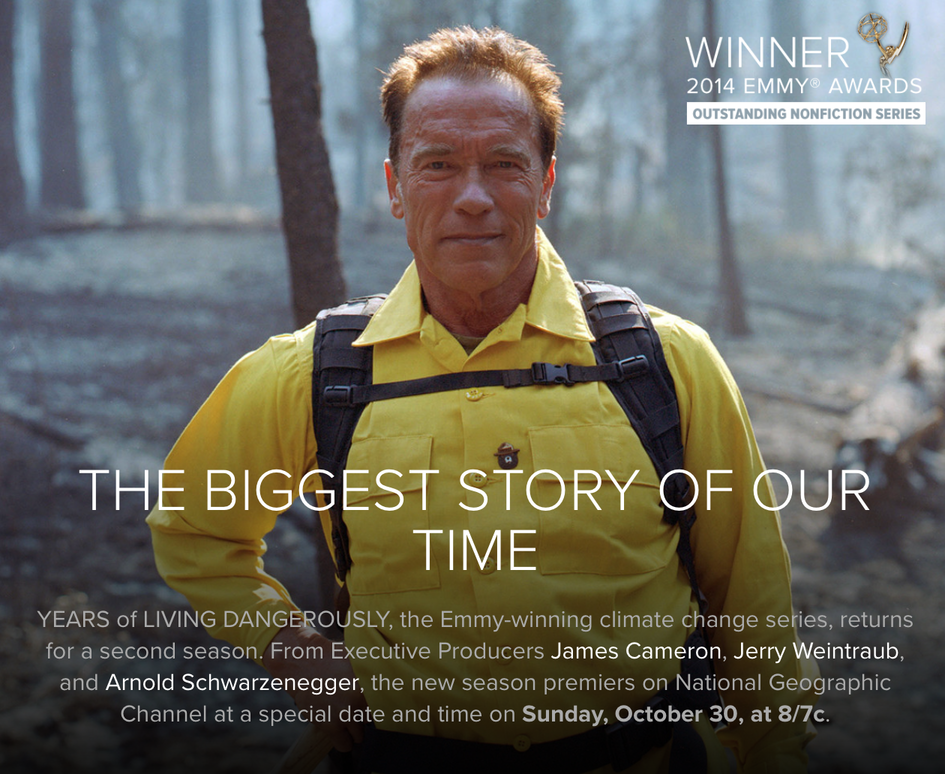
Image credit: Years of Living Dangerously
Nowhere was the power of climate storytelling on bigger display during Climate Week than during a screening of season two of National Geographic’s Years of Living Dangerously series at the Museum of Natural History. As far as celebrity power and the environmental movement go this was a pretty solid showing as former Governor Arnold Schwarzenegger spoke ahead of the screening to a crowd he brought to laughter a number of times -a crowd that included both prominent environmentalists and superstars like Tom Brady and Gisele Bundchen.
Bundchen and Schwarzenegger are among the hosts for each of the episodes in the Years of Living Dangerously Series. During the screening the two stories on display were David Letterman’s journey to India and Saturday Night Lives Cecily Strong's expose on politicians working to hold back the solar industry in Nevada and Florida. Letterman’s journey was funny, as expected, but it was quite revealing of the intertwined infrastructure and development challenges India faces. When it publically airs, this episode will be Letterman’s first television appearance since retiring from the Late Show with David Letterman. He now has a beard, which plays a prominent role in the episode. While Letterman used his typical wit to tell his story, SNL’s Cecily Strong took on a surprisingly serious tone during her episode documenting the tricks individuals are still willing to play despite their climate implications. Both episodes were powerful and both left the audience intrigued for more. They were good stories.
But the storytelling wasn’t just restricted to celebrities. Throughout Climate Week events focused on the narrative. When Bank of America announced it plans to go carbon-neutral; reduce location-based emissions by 50%, energy use by 40% and water use by 45% in its operations across the globe - all by the same 2020 deadline,” Andrew Pleper explained how building on previous commitments has to be part of the business story for taking climate action. “Together we can accelerate the transition to a more sustainable and low-carbon economy,” said Pleper during the opening ceremony of Climate Week. Former United States Environmental Protection Agency Administrator and current Apple Vice President of Environmental Policy and Social Issues picked up on Pleper’s line when Apple announced it too would be joining the RE 100 campaign and would be making significant investments in solar energy. “We have to be the ripple on the pond. We can’t just be 100% renewable energy, we have to bring others with us,” said Jackson. Even when real steps are being taken, it seems they are all coming with real narratives.
Over the last several years, progress in climate policy has clearly coincided with concerted efforts to make the issue more relatable. Climate change is a security issue, and over the last several years you have seen countless military personnel tell their climate stories. Climate change is a health issue and the stories of moms fighting for cleaner air or safer neighborhoods are permeating throughout the movement. Pope Francis’ climate messages, starting to gain traction a bit more than a year ago, created a religious narrative for those seeking to get involved, while those living on the front lines of climate impacts are increasingly making headlines. It’s all about the story.
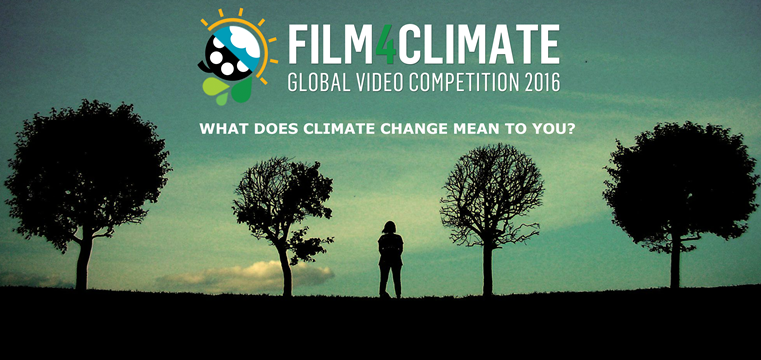
Connect4Climate invited filmmakers between the ages of 14-35 years old from all over the world to share their climate stories on video.
Storytelling is the backbone of our Fim4Climate global video contest. When the Connect4Climate team of the World Bank decided to launch a film competition with numerous partners, rewarding those telling the best climate stories in a number of categories, the idea was to encourage more story telling, gather a diversity of perspectives and provide another venue for spreading these very real experiences.
As September drew to a close so to did the submissions for entries in the Film4Climate contest. With more than 860 entries from more than 150 countries it is becoming clear the demand for climate stories is being met with a steady supply. So while 2016 may not be known as the year the world reached a historic climate agreement like we had in 2015, perhaps it is the year of the climate story. If the last few weeks are any indication there are still plenty more to tell.



